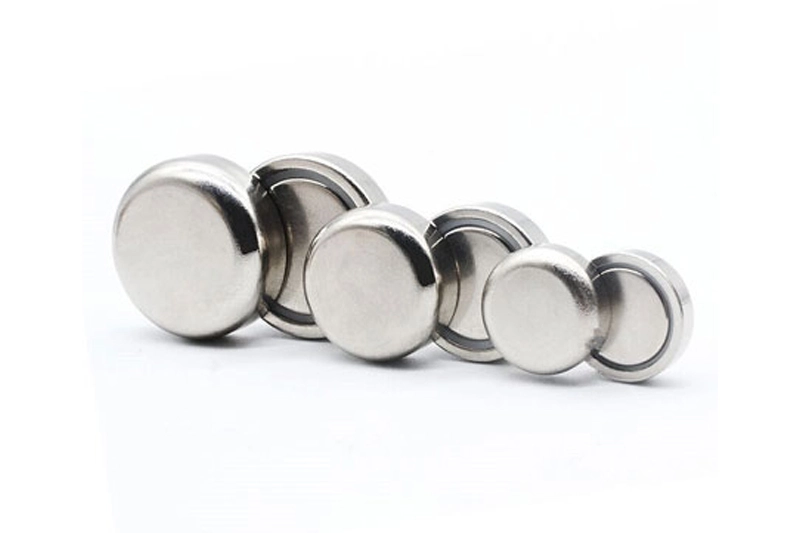In comparison, neodymium magnets of the same size as ferrite magnets are much stronger and are therefore recommended when space is limited. Neodymium magnets have ten times stronger adhesion than ferrite magnets. However, the latter is cheaper but also more stable because no rare earth elements are used in the processing, just like neodymium magnets, and the price fluctuates widely.
Neodymium magnets are rare earth strong magnets containing neodymium, iron and boron. There are two types of rare earth magnets. One is a neodymium magnet and the other is a samarium cobalt magnet. These are permanent magnets. Furthermore, the magnet has an alloy of the aforementioned metals in the form of a Nd 2 Fe 14 B tetragonal crystal structure.
It is the strongest commercial grade magnet currently available. Therefore, these magnets can replace many other forms of magnets in modern products, such as motors in cordless tools.
Neodymium is a ferromagnetic material; therefore, we can magnetize it into a magnet. However, this element has a very low Curie temperature (a material where magnets lose their magnetism).
Therefore, in its pure form, it exhibits magnetic properties at very low temperatures. But if we alloy neodymium with transition metals like iron, we can improve the magnetic properties of the material. The improved form is what we call a "neodymium magnet".
Ferrite magnets are ferromagnetic ceramic materials. Therefore, we call them ceramic magnets. Regular magnets are another name for ferrite magnets because these magnets are mostly used for general purpose. The main component of these magnets is ferrite.
Ferrite is a ceramic material. It is mainly composed of iron (III) oxide. We mix this compound with some other metals such as barium, manganese, nickel and zinc. These components are ferromagnetic and non-conductive.
Additionally, these magnets such as ferrite pot magnet have relatively low remanence (magnetic field strength) and coercivity (the material's resistance to demagnetization). However, depending on the coercivity (high and low, respectively), there are two types of ferrite magnets, hard ferrite and soft ferrite. In addition to this, the magnetic energy product (magnetic energy density) is relatively low. However, the Curie temperature is relatively high.
1. The benefits of ferrite magnets
It is produced by powder metallurgy method, with low remanence and low recovery magnetic permeability. The coercive force is large and the anti-demagnetization ability is strong, which is especially suitable for the magnetic circuit structure used in dynamic working conditions. The material is hard and brittle and can be used for cutting with emery tools. The main raw material is oxide, so it is not easy to corrode. Ferrite magnets can be used at temperatures from -40°C to 250°C.
2. The benefits of neodymium magnets
It is the strong neodymium pot magnet with the highest commercial performance. It is called the magnet king. It has extremely high magnetic performance. Its maximum magnetic energy product (BHmax) is more than 10 times higher than that of ferrite. Its own machining performance is also quite good. The working temperature can reach up to 200℃. Moreover, its texture is hard, its performance is stable, and it has a good price/performance ratio, so it is widely used. However, because of its strong chemical activity, it must be treated with a surface coating. (such as Zn, Ni, electrophoresis, passivation, etc.).

Related Article
Please fill the form to let us know your need. Our sales will get in touch with you ASAP.